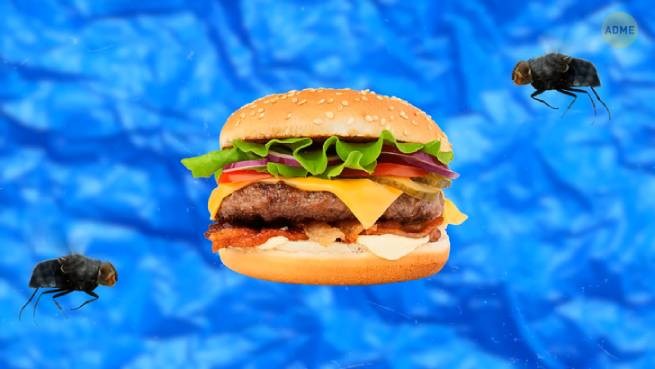The presence of a single fly near your food table may not cause you any concern. But that doesn't mean it's not dangerous.
Scientists explain, under what conditions does food become dangerous after a fly lands on it. As The Washington Post writes, citing recommendations from experts, the insect may well transfer pathogens* from garbage, feces, dead animals and other sources that it may have “feasted” on before onto food products.
Houseflies cannot bite or chew food, because their mouths are shaped like spongy straws. These insects use a special substance containing digestive enzymes to feed. They burp a liquid onto potential food that is partially capable of breaking down food. The insect then drinks it along with food particles that are suitable for consumption.
At the same time, together with the regurgitated liquid Flies can carry pathogens onto food that they have ingested during previous meals.
Research shows that insects can spread bacteria such as E. coli, salmonella and campylobacter, which cause diarrhea, and also carry viruses and parasites. Despite their small size, flies can carry more than 1 million bacteria on their bodies – their heads, six legs and feet, which have claws and sticky suckers.
Risk of exposure to pathogenic bacteria increases in food processing facilitiesfor example, on poultry farms. According to Erika Mechtinger, an associate professor of entomology at Pennsylvania State University in the US, in poultry farms, large numbers of flies have access to chicken feces to feed on. There, they easily transfer pathogens to eggs, which then end up on grocery store shelves.
When do flies pose a health hazard to humans? To cause disease, flies must transfer an infectious dose of pathogens to human food products – the amount of pathogen required to cause infection. Insect-borne disease expert Lyric Bartholomew explains that the “dose” of microorganisms needed to infect a person depends on the species.
For example, ten microorganisms are enough for the gastrointestinal bacterium shigella, which causes shigellosis – a disease accompanied by damage to the colon, fever, diarrhea with blood, mucus and pus.
Salmonella requires more than 50,000 microorganisms. If infected, a person may develop salmonellosis is a disease whose symptoms are:
- increase in temperature,
- headache,
- weakness,
- malaise,
- abdominal pain,
- nausea and vomiting,
- diarrhea.
Salmonellosis can be mild, but in some cases dehydration associated with the disease is life threatening.
Lyric Bartholomew says one or two flies are unlikely to pose a serious health risk. Of all the bacteria carried by insects, only a small fraction can cause illness, he reassures.
At the same time, however, argues Erika Mechtinger, The likelihood of multiplication and increased potential damage to the body increases if pathogens are present in food for a long time and under favorable conditions.
How can you protect yourself from pathogens carried by flies? Experts give simple advice: control the number of flies in the house. Nets on windows and doors can help with this. In addition, you should take out the garbage in a timely manner, the smell of which attracts insects.
*A pathogen is any environmental factor capable of causing damage to any body system or the development of any disease.







More Stories
Farmer Throws Six Tons of Green Olives Out on the Street
Patras: First school suspension for using smartphone. Parents are outraged
Mitsotakis announces mobile phone boxes in Greek schools